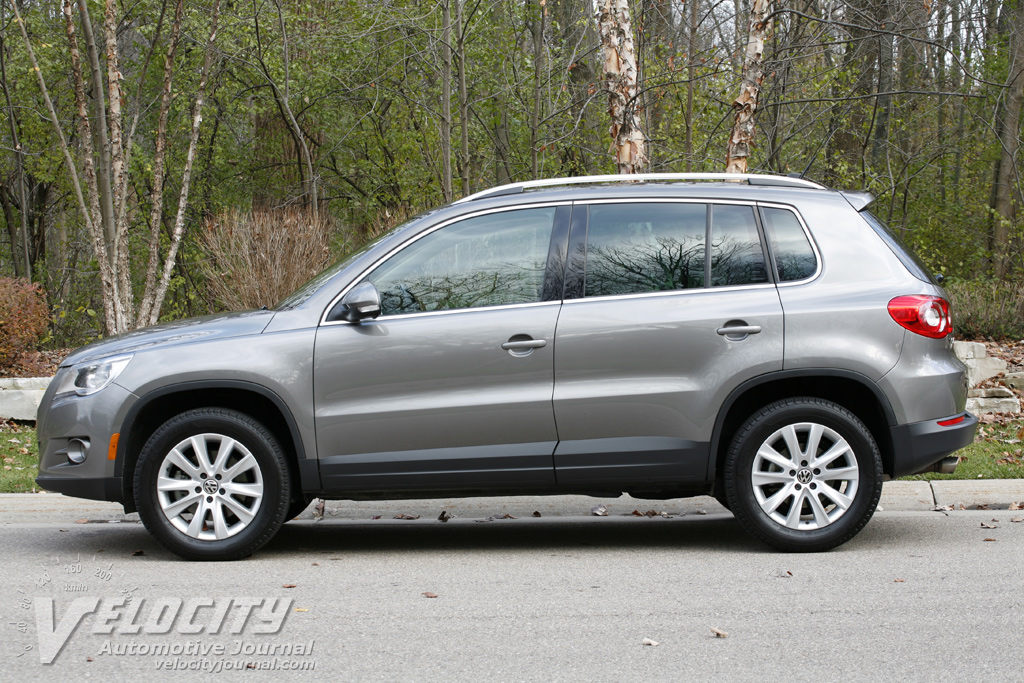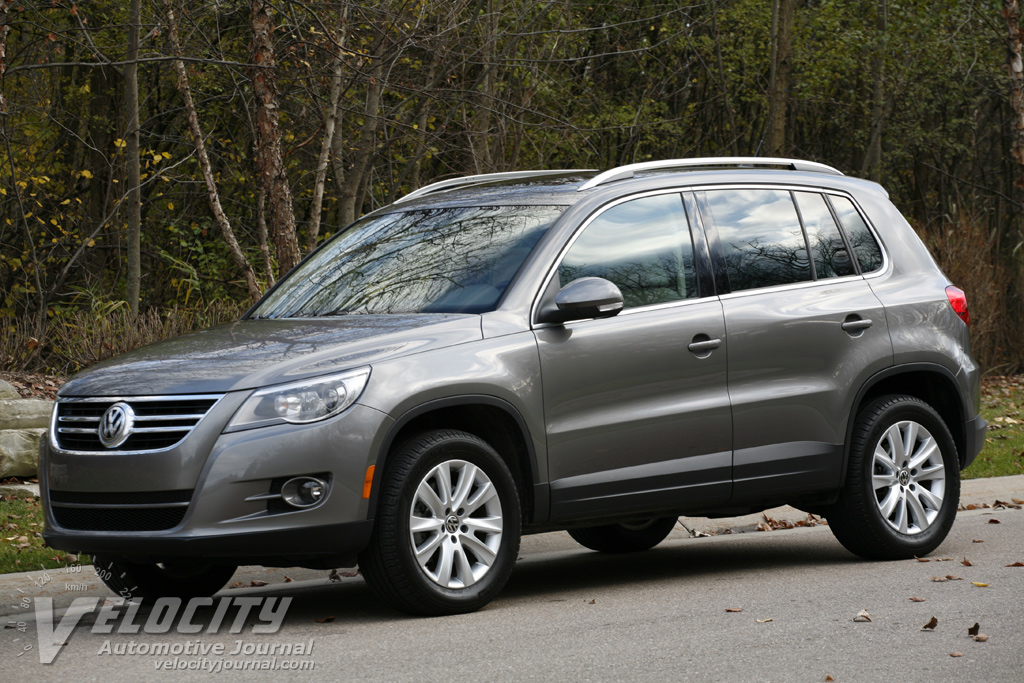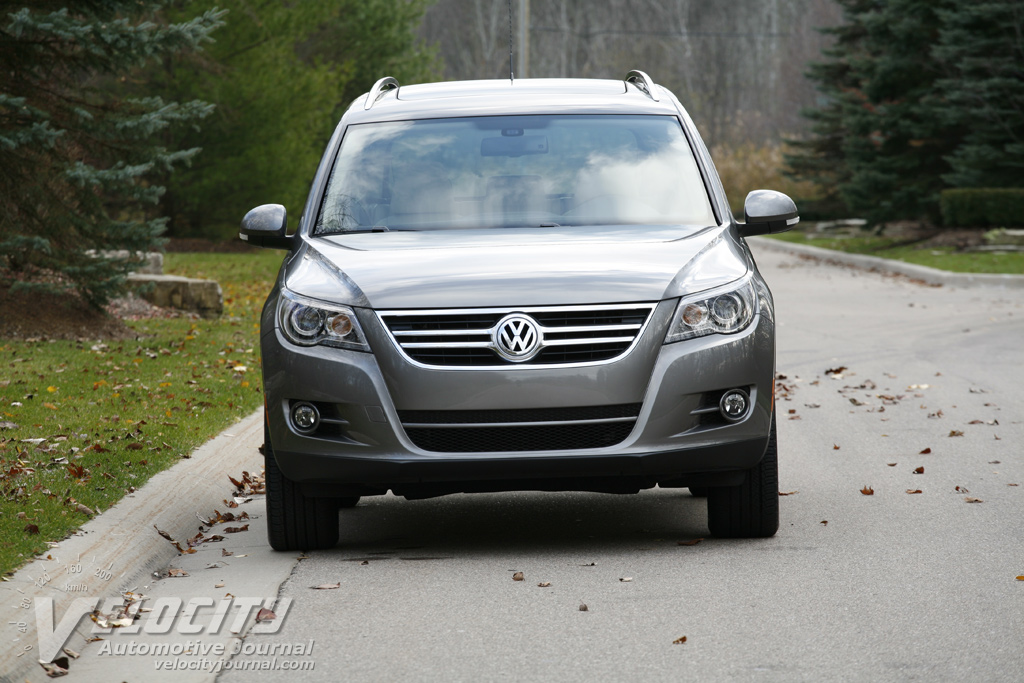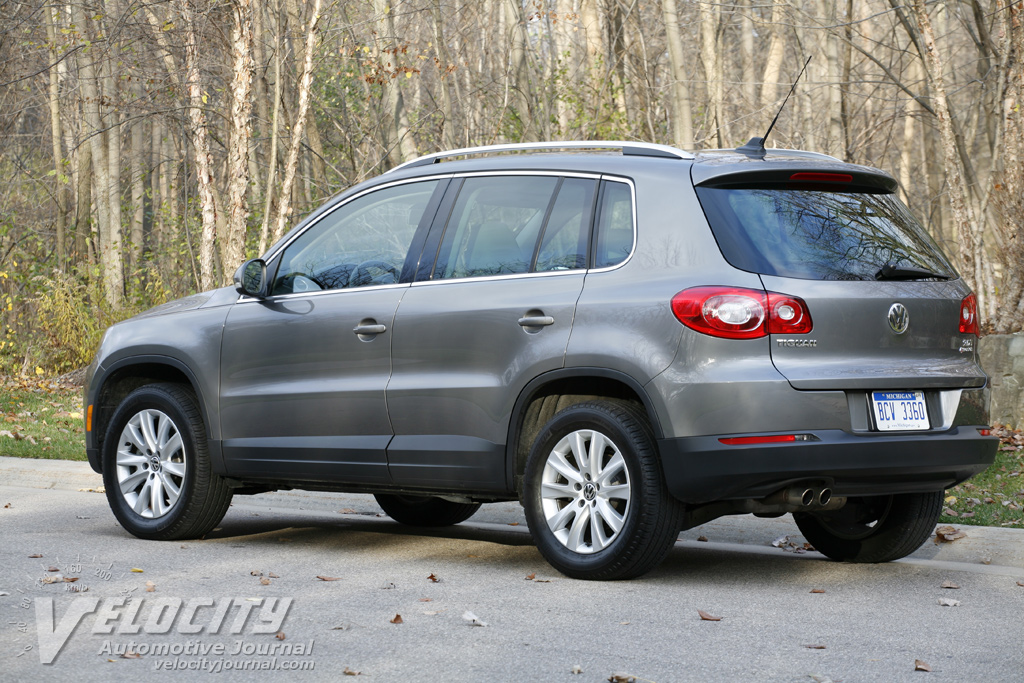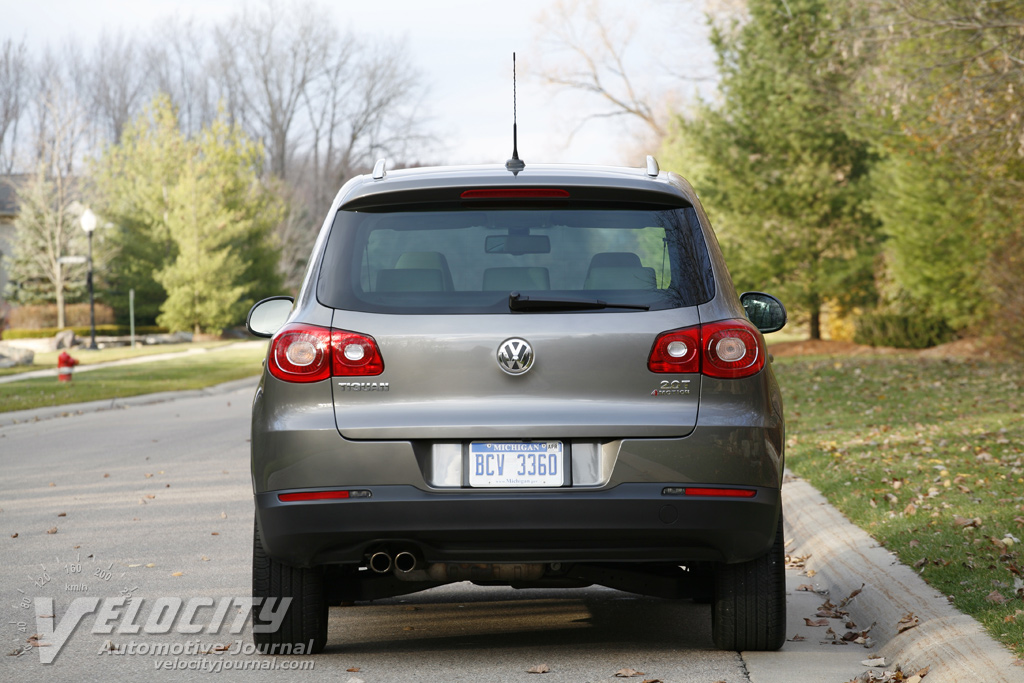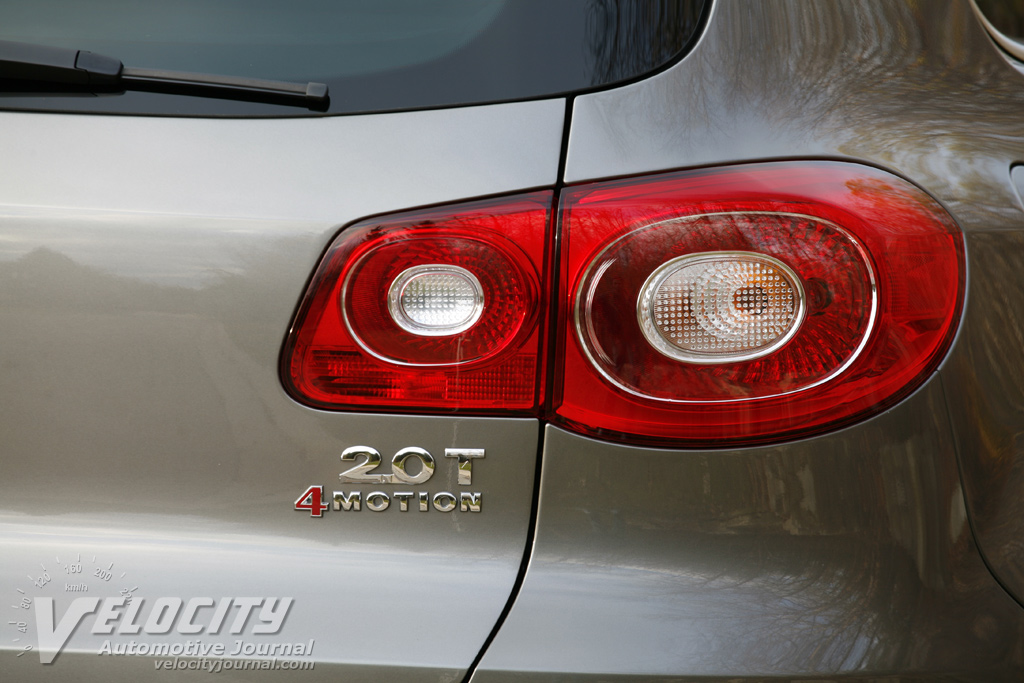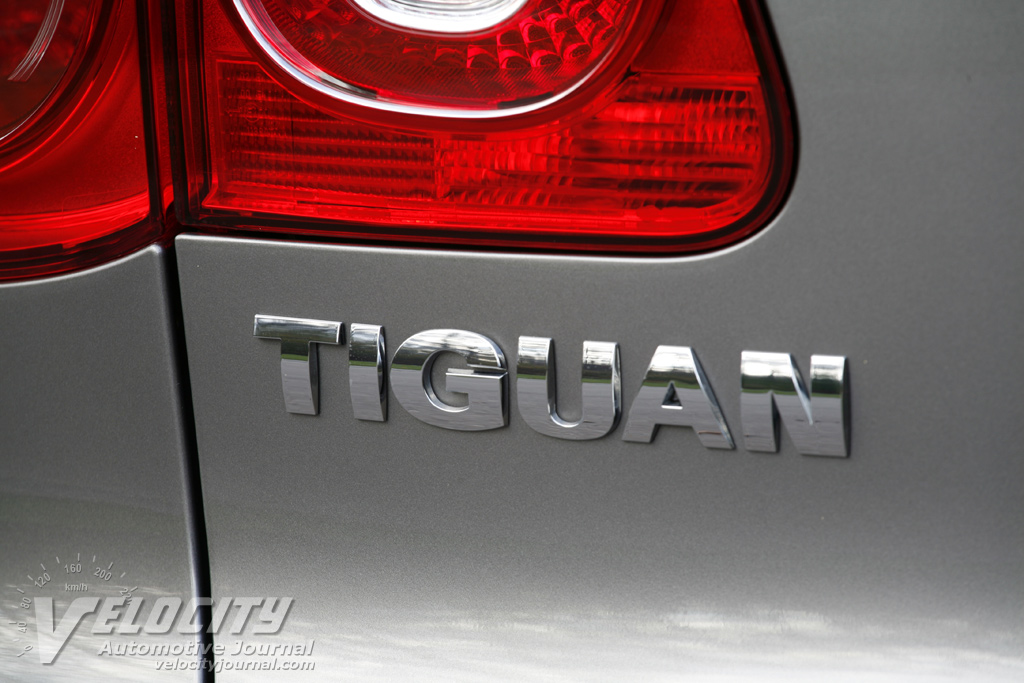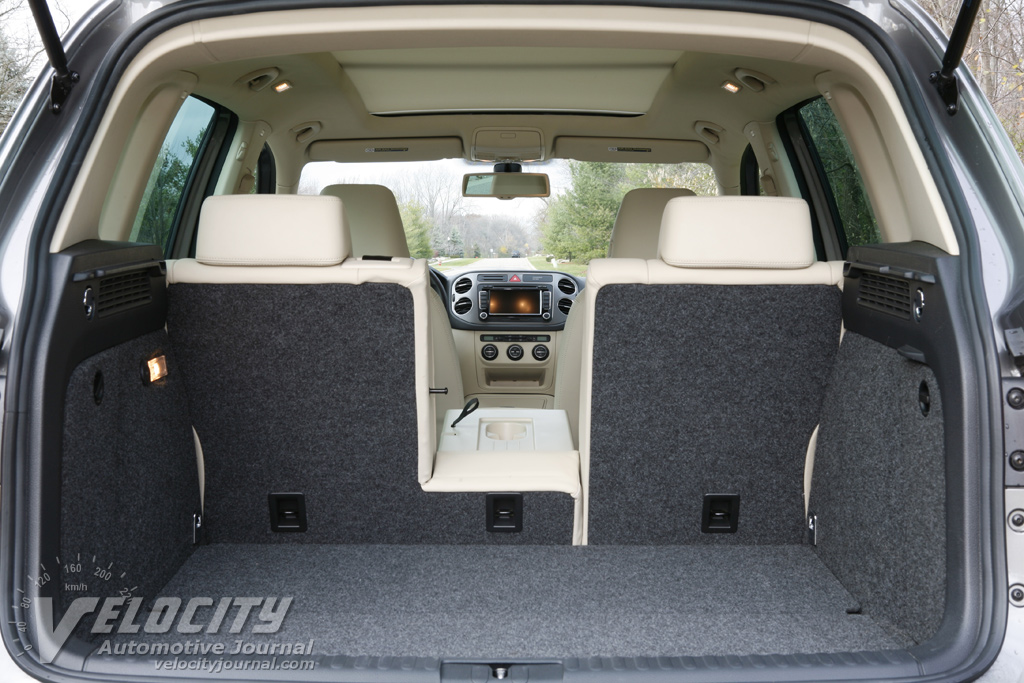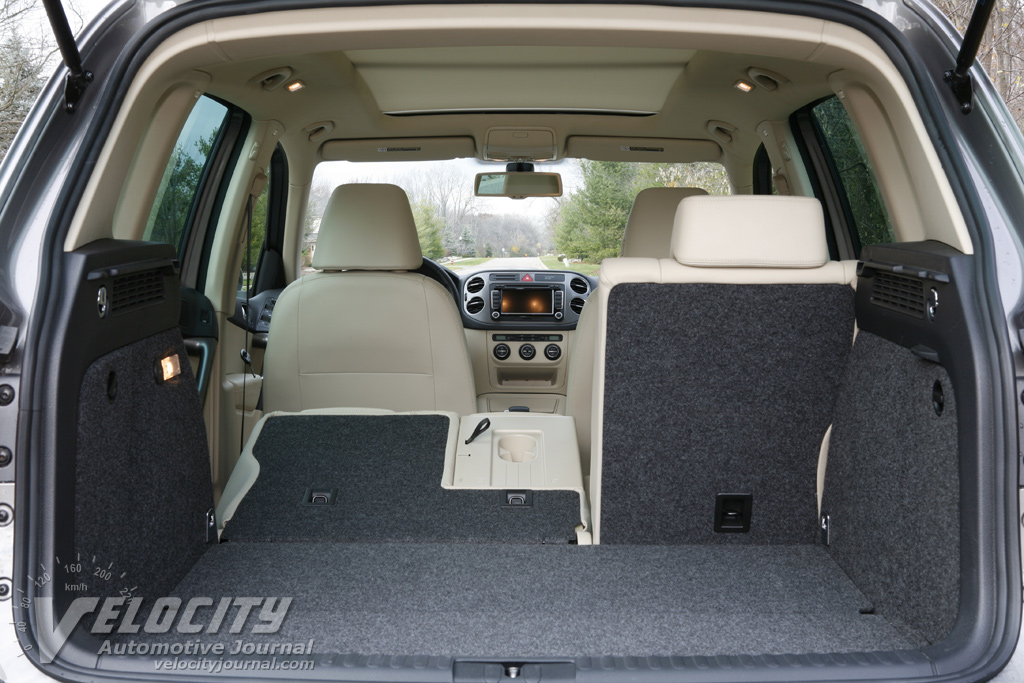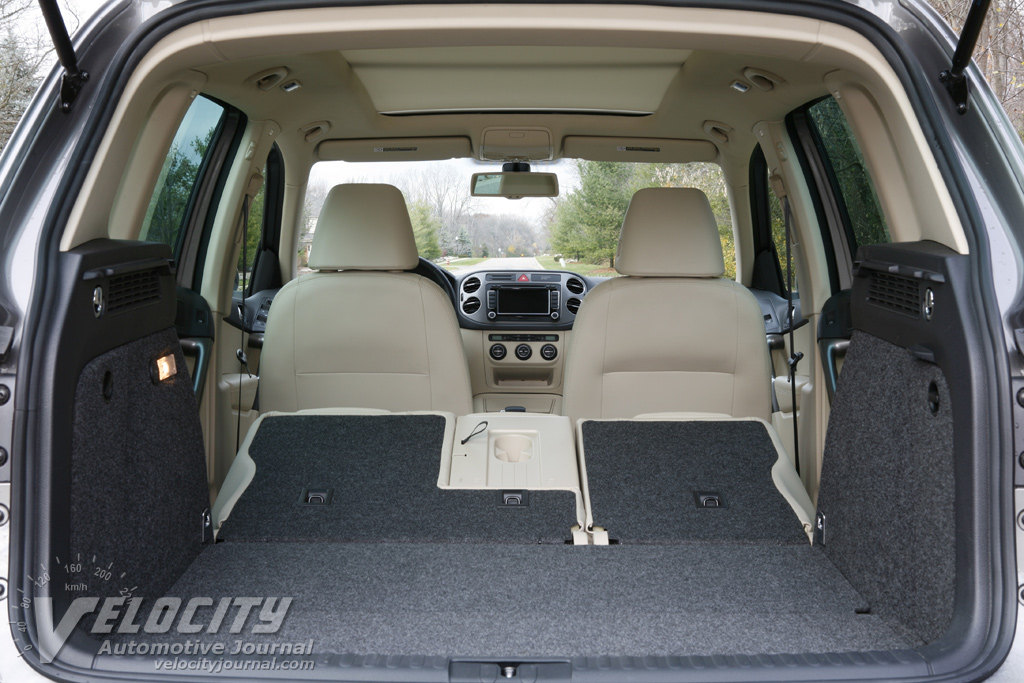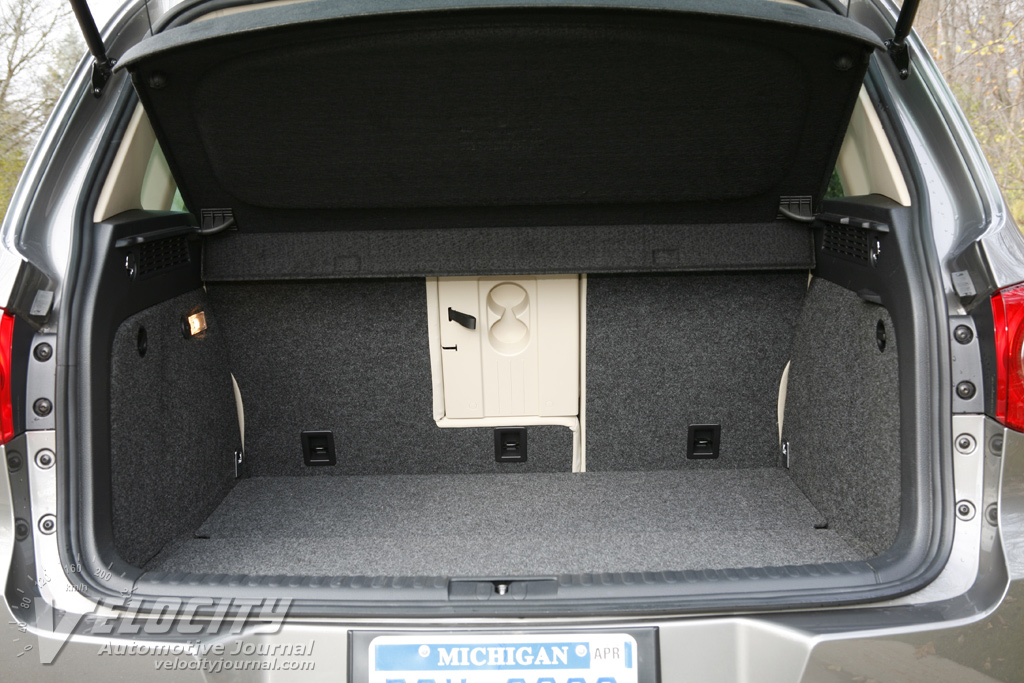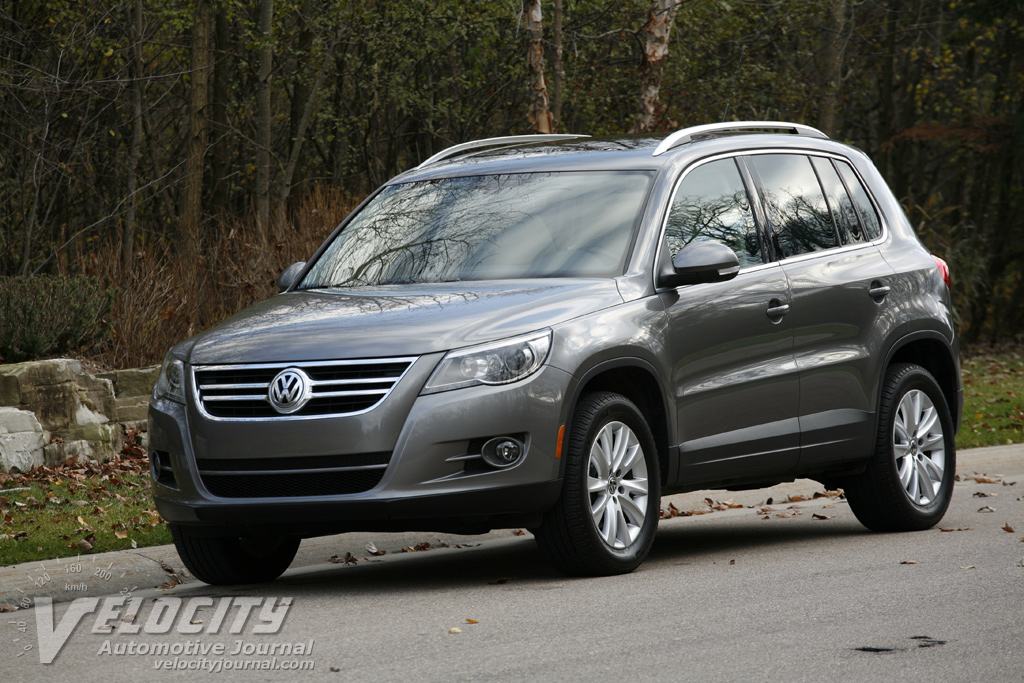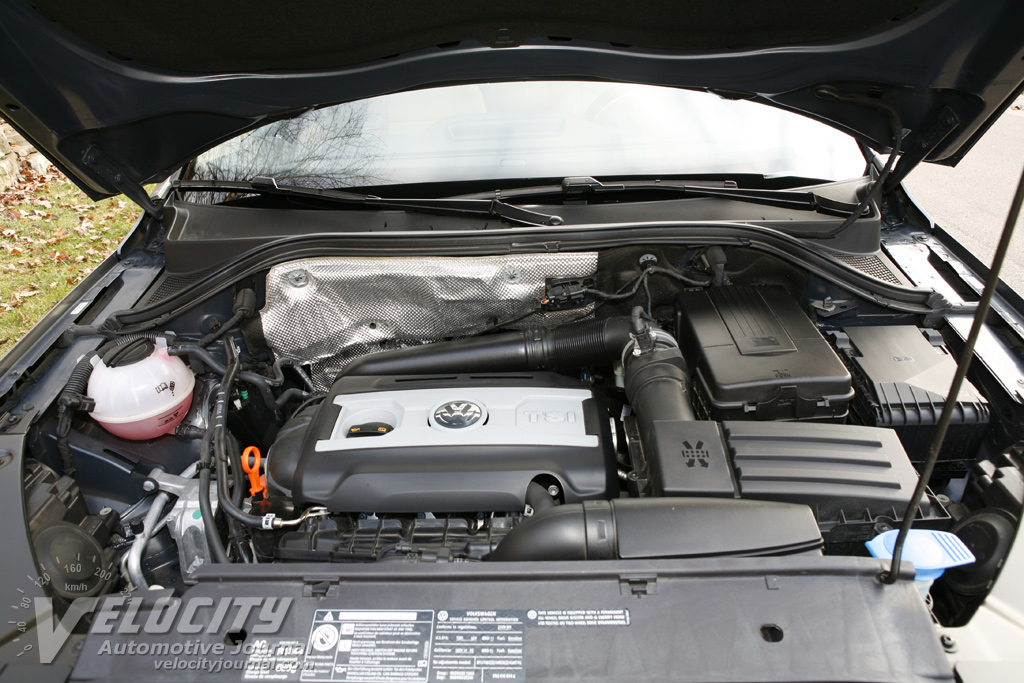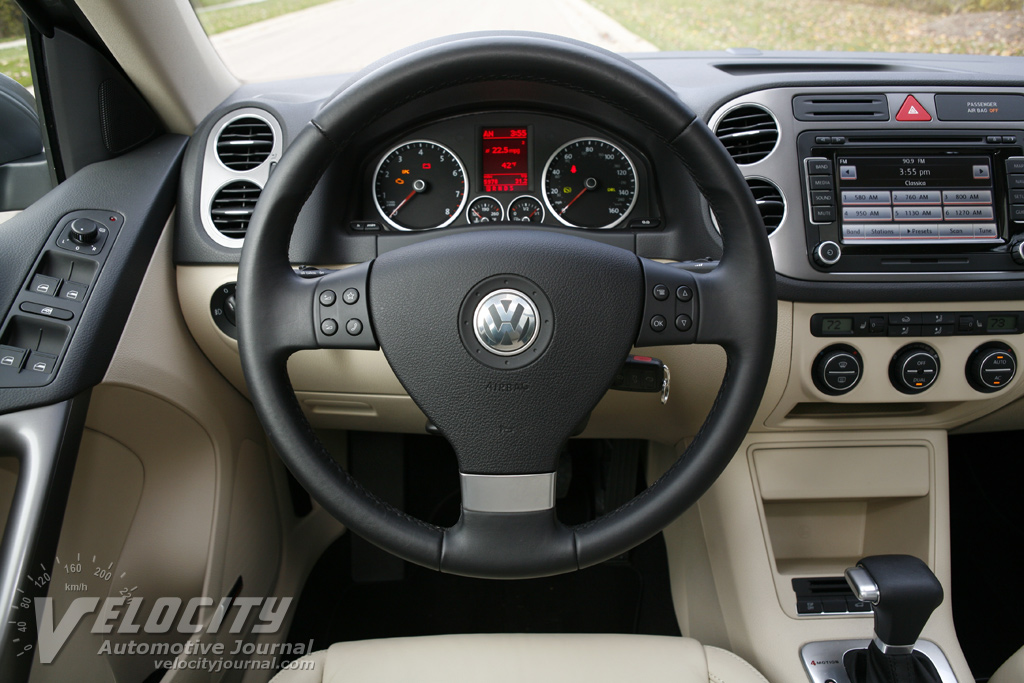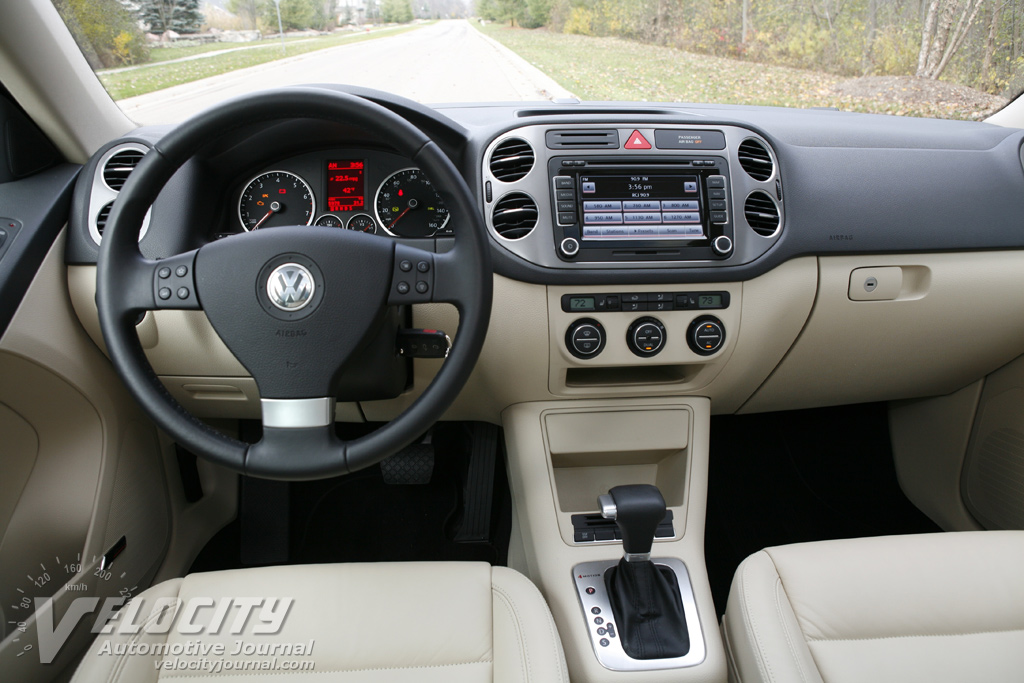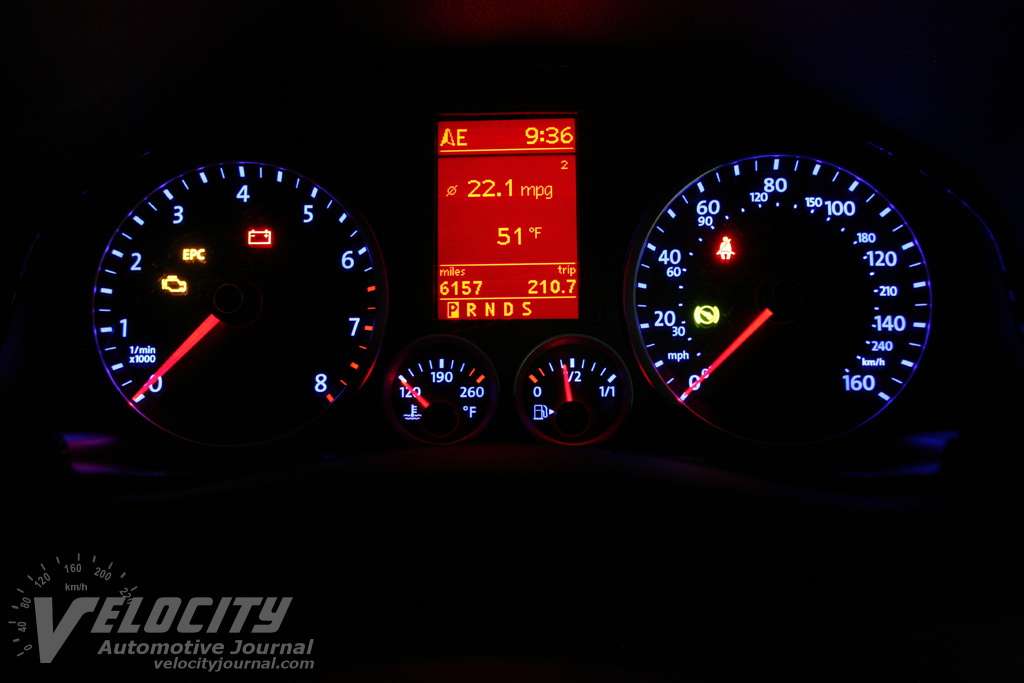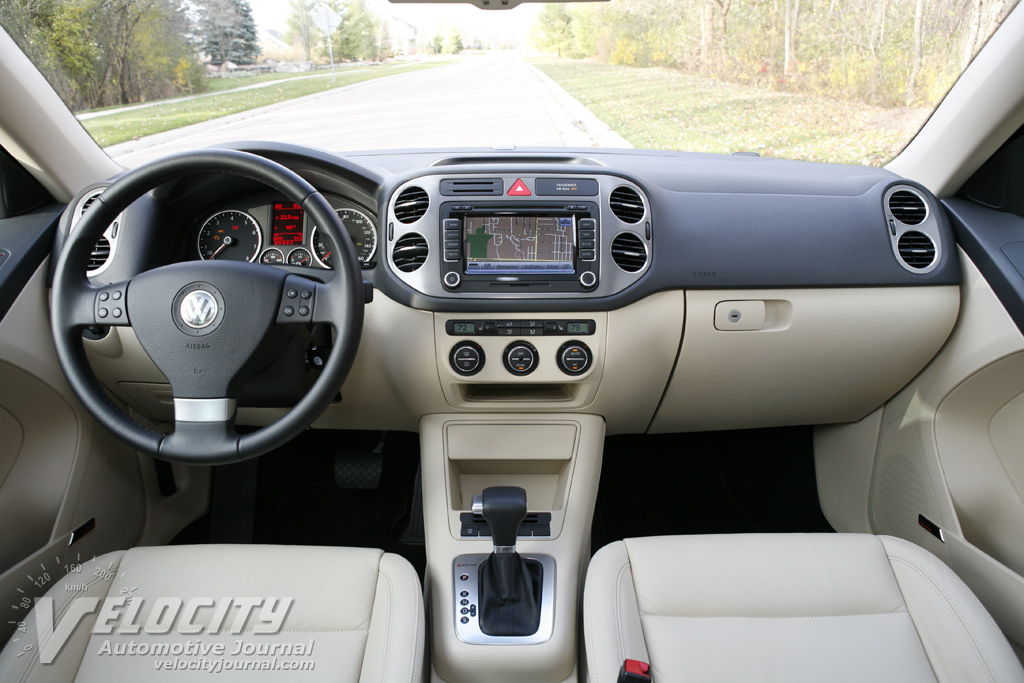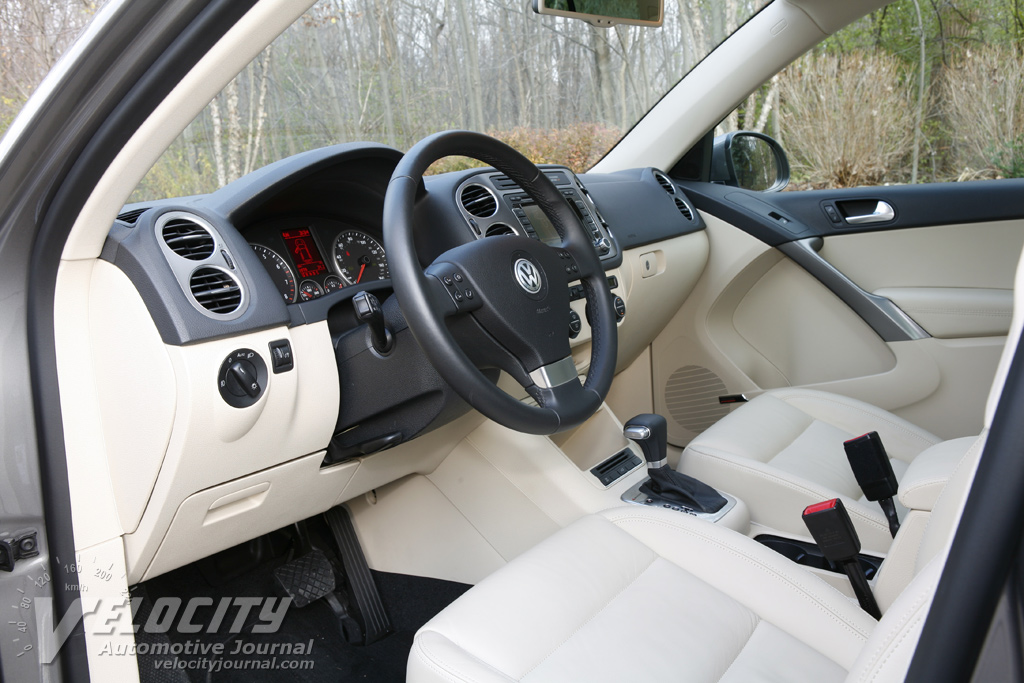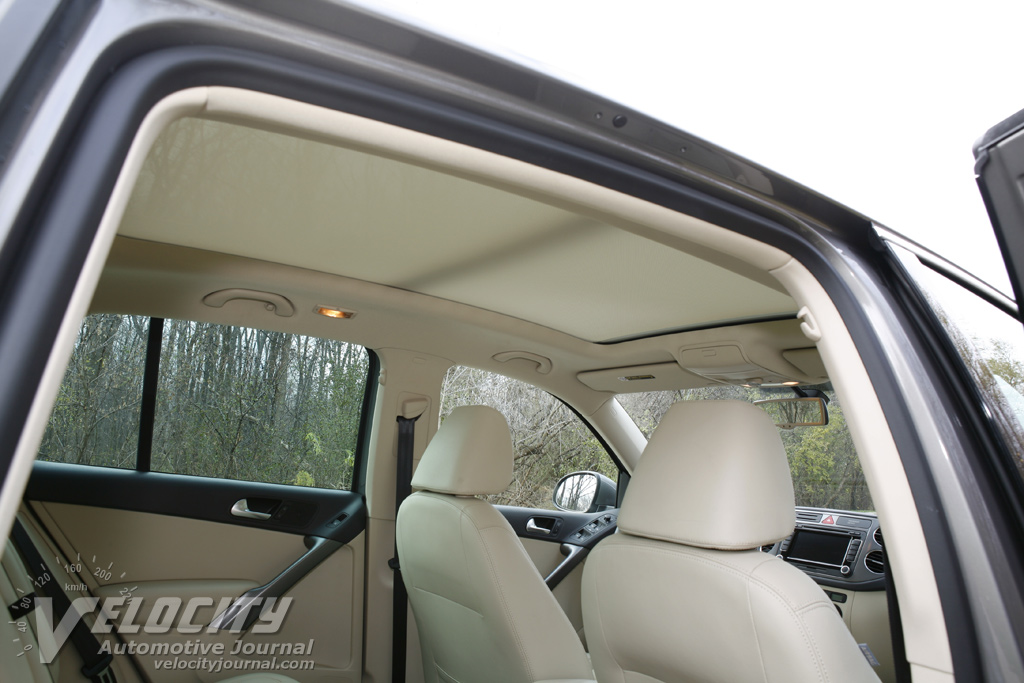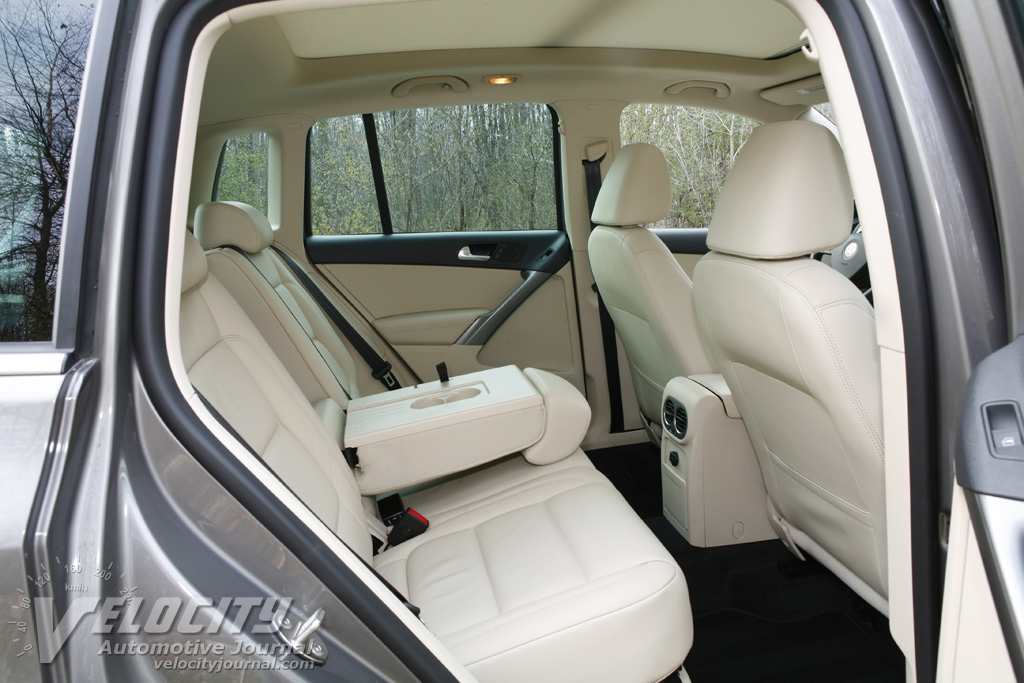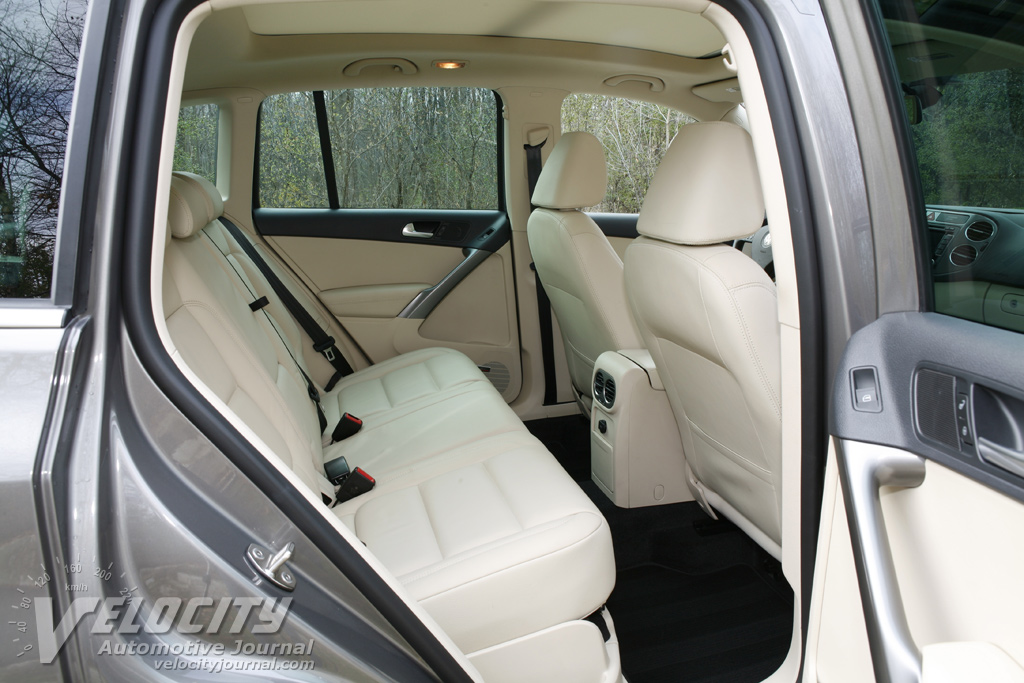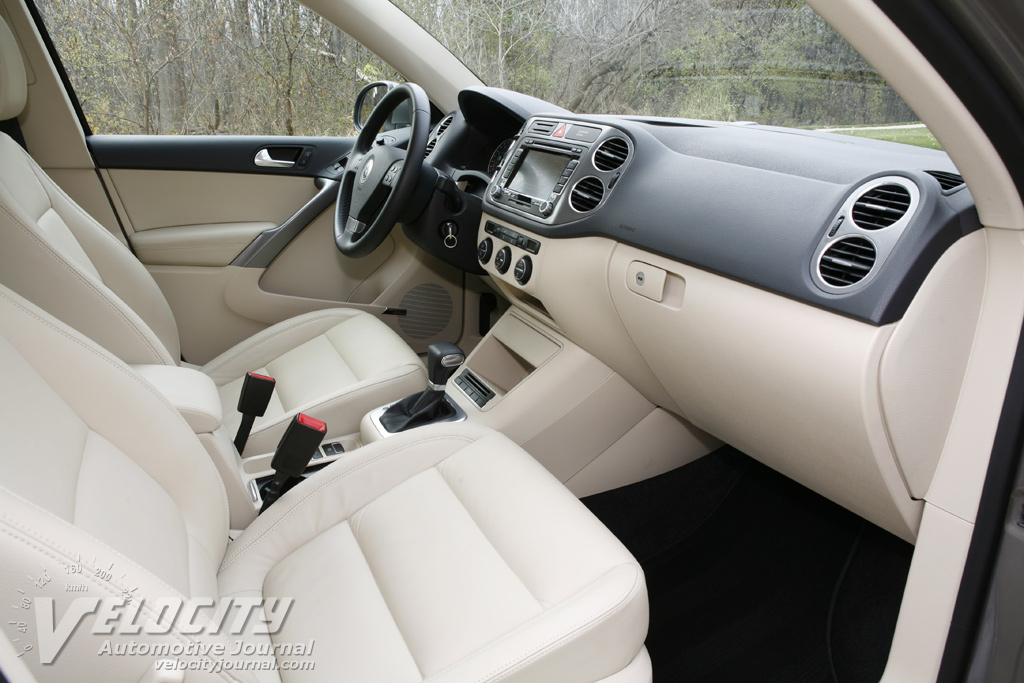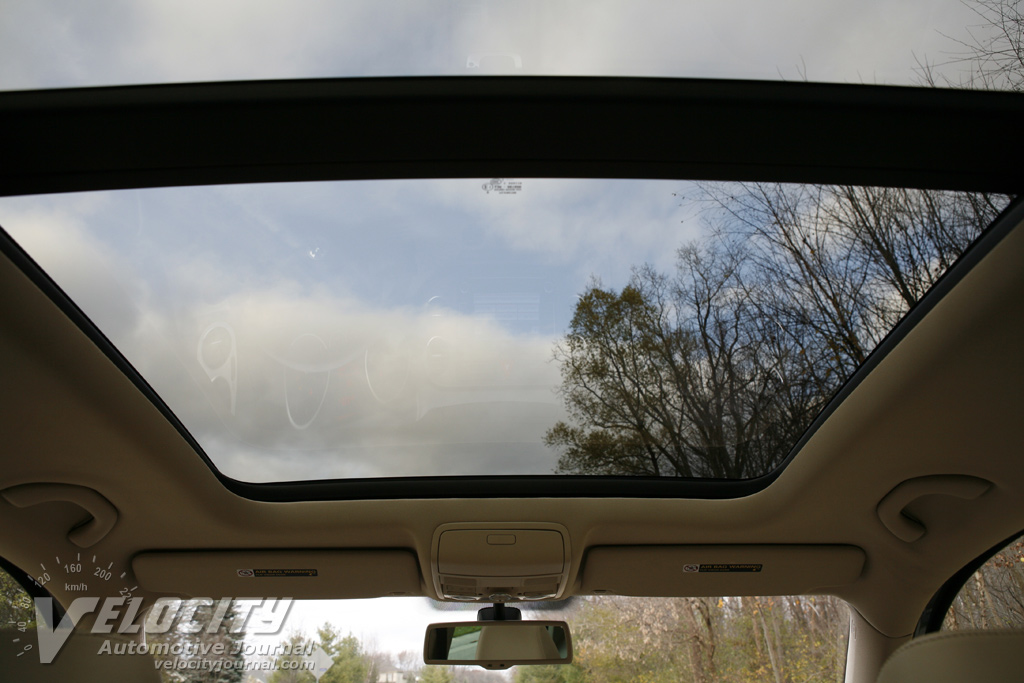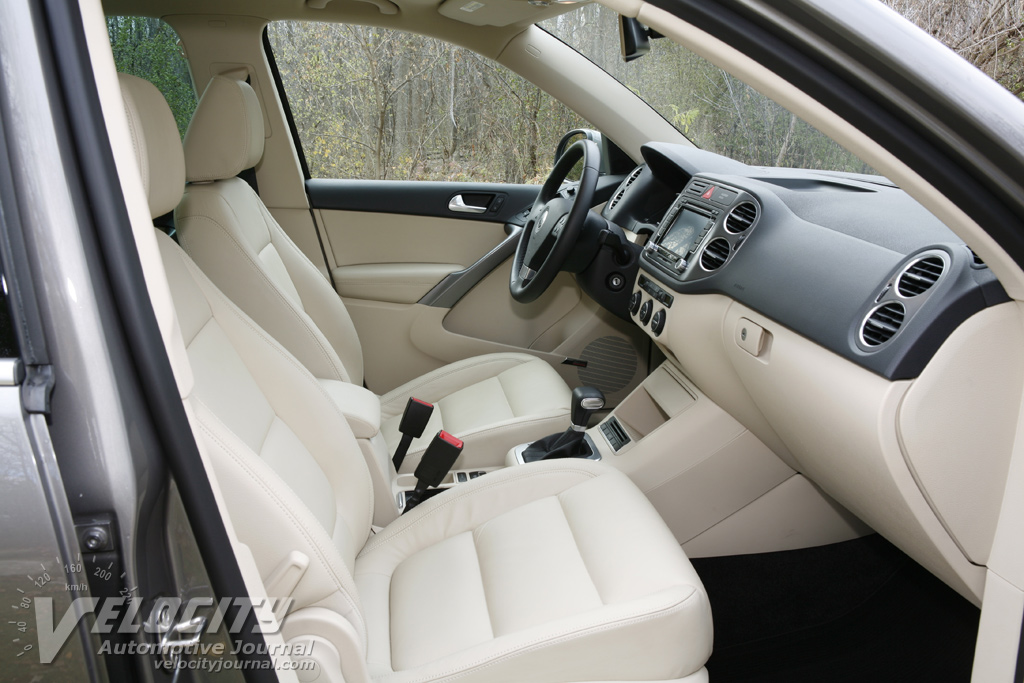2009 VW Tiguan SEL
11/14/2008
Shahed Hussain
In a market long dominated by the Honda CR-V, Toyota RAV4, and Ford Escape, Volkswagen's Tiguan is a late entry. With pricing at the upper end of the segment, VW hopes to appeal to affluent buyers looking for a premium SUV, but with nimble handling and decent fuel consumption.
Of the three available models, the range-topping Tiguan SEL 4Motion is the most comprehensively equipped. At the bottom, the base front-wheel drive Tiguan S starts at $23,200, while the midlevel SE begins at $26,925. Transmission choices include a 6-speed manual (Tiguan S) or automatic (Tiguan SE and SEL). Volkswagen's 4Motion all-wheel drive system is optional on SE and SEL models; the base Tiguan S is front-drive only.
We tested a Tiguan SEL 4Motion, which has a list price of $32,940; options included DVD navigation with rearview camera ($1,950), Power Panoramic Sunroof ($1,300), and rear Side Supplemental Restraints (airbags) for $350. Including the $690 destination charge, the total was $37,230. Considering the long list of standard equipment, we would probably skip the expensive navigation system and sunroof, which would slice $3,250 off the bottom line for a total of $33,980.
Relative to Asian and domestic competitors, VW priced the Tiguan SEL at the upper end of the segment. For instance, the most expensive Honda CR-V, Nissan Rogue, and Toyota RAV4 models start at well under $30K, which certainly puts the Tiguan SEL at a disadvantage from a value perspective. Most Saturn Vue models are significantly under $30K, while the Hyundai Santa Fe undercuts the Tiguan as well. Among premium compact SUVs, the Acura RDX matches up to the Tiguan; although Acura's muscular turbo inline-4 has a decided horsepower advantage over the Volkswagen.
With the Tiguan, VW continues its tradition of attractive design and materials. Our test vehicle featured contrasting charcoal and sandstone trim. Standard leather seats offer decent thigh and torso lateral support; the driver's seat includes power controls, but the passenger seat has manual adjustments only. Rear seat occupants are treated to above average headroom and legroom; the center passenger position includes its own headrest and reasonably comfortable accommodations. The optional panoramic sunroof spans both rows of seats; control knobs on the overhead console retract the glass panel or engage the sliding fabric sunshade as desired.
Jetta owners will find the Tiguan's instrument panel a familiar sight, which has a similar look and feel. Facing the driver is an 8,000 RPM tachometer and 160-MPH speedometer; smaller gauges for coolant temperature and fuel level are nestled in between. A driver information display in the instrument panel shows fuel consumption, transmission mode, exterior temperature, and compass direction. Audio and phone control buttons are conveniently located on the spokes of the leather-wrapped steering wheel. A dash-mounted LCD touch screen combines navigation and audio system functions. However, the touch screen lacks the tactile feedback of conventional buttons and knobs, so the driver must glance over at the display to confirm system settings. In contrast, the dual-zone climate control system is intuitively laid out, requiring minimal familiarization. Dual cupholders are located on the center console between the front seats. Under the center armrest is a storage compartment, while two smaller bins on the center console will hold smaller objects.
Volkswagen's ubiquitous 2.0L turbo inline-4 is the sole powerplant in all Tiguan models. This iron block, aluminum head powerplant cranks out 200-bhp from 5,100-6,000 RPM and delivers 207 lb.-ft. of torque from 1700-5000 RPM. With minimal turbo lag and a fat torque band, this powerplant feels like a small V-6, especially in the midrange. More surprising is that this inline-4 rivals the smoothness and refinement of a V-6. VW claims that the Tiguan can make the 0-60 MPH sprint in 7.9 seconds and accelerate to an electronically limited top speed of 129 MPH. According to the EPA, the Tiguan 4Motion achieves 18/24 MPG (city/hwy.). In our mixed urban and highway driving, we averaged 22 MPG overall.
VW offers a 6-speed manual on the front-wheel drive Tiguan S, but most customers will probably choose the automatic, a smooth-shifting 6-speed unit. For faster downshifts and better throttle response, click the shifter into "S" mode and the transmission will favor lower gear ratios than in "D". For full manual control, select the Tiptronic shift mode to sequentially shift gears. In most normal driving conditions, we preferred to let the transmission do the shifting.
The Tiguan's front suspension consists of MacPherson struts, coil springs, and lower wishbones; at the rear is a 4-link setup with coil springs. Disc brakes are at all four corners, with vented rotors in front. All Tiguan models include ESP (Electronic Stability Program) for enhanced handling and safety. The Tiguan rides on generously sized P235/55R17 Michelin Latitude tires on 17-inch alloy wheels; an optional 18-inch wheel/tire combination is also available.
As a German-designed vehicle, the Tiguan's road manners are exemplary; this compact SUV balances ride comfort with taut handling that is remarkably similar to the Jetta, at least in normal urban driving conditions. Nonetheless, the Tiguan doesn't attempt to masquerade as a sport sedan, as its significant body roll and moderate understeer encourage a relaxed pace on winding roads. On the interstates the Tiguan is in its element, as its precise steering and well-damped suspension contribute to excellent straight-line stability. Minimal wind or tire noise contributes to the Tiguan's serene highway demeanor.
Despite entering the market later than other manufacturers, Volkswagen has designed one of the best compact SUVs in its class. While the Tiguan S and SE take on the Asian and domestic competitors, the pricey Tiguan SEL ventures into the midst of some formidable luxury nameplates. So while the lesser Tiguan models are certainly worth considering versus their competition, we aren't quite so sure that the Tiguan SEL merits the same attention when other alternatives from Infiniti, BMW, and Lexus are available for just a few thousand dollars more. So unless the Tiguan SEL strikes your fancy, and your pocketbook agrees, we think that most customers will be better served with the more affordable Tiguan SE.

